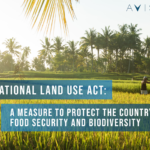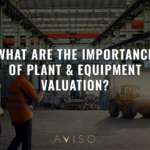
Auto Tax Reform: What It Means for Car Buyers
The auto industry in the Philippines has seen a steady incline due to the booming economy and improving spending power of Filipinos. Car loan interest rates are at an all-time low, making it more affordable for working citizens to own a car.
In fact, the Philippine automotive industry closed 2016 with total record sales of 452,751 units. CAMPI (Chamber of Automotive Manufacturers of the Philippines Inc.) reported a 24.6% increase in sales from the previous year, while AVID (Association of Vehicle Importers and Distributors) reported that their total sales increased by 60%.
Just look around during your daily commute and you will see the manifestation of this growth. The roads are packed. Brand new cars sprawl the city (along with outdated public transportation) clogging the major thoroughfares of the Metro. For many, it’s almost unbearable.
If you’ve been paying attention to recent events, the Department of Finance (DOF)—in its slant towards a more ‘progressive’ tax measure—has proposed a new auto excise tax. The sweeping tax reform (which includes aggressive reforms in the excise taxes of automobiles and petroleum products), has been lauded by the Asian Development Bank (ADB) as an auspicious policy to support the Duterte administration’s 10-point economic agenda. According to the DOF, this new policy “will probably be effective in 2018.”
One of the major reasons for the change? To curb Manila’s worsening traffic condition. The proposed tax reform is contingent in reducing new car ownership, thereby preventing further road congestion from private cars and indirectly encouraging use of public transportation.
Finance Secretary Carlos G. Dominguez III said it best, “What’s the point of buying a new car and not moving in the streets?”
Why the change?
The new car excise tax proposal by the DOF and its counterpart in Congress, House Bill (HB) 4774, is structured to even out the income tax reduction. Revenue from auto excise taxes is said to be allocated for new infrastructure and improvements in public transportation.
Dominguez stressed, that “the point of the matter is we want to direct the people to use public transport. We are making big investments in public transport, particularly the bus rapid-transit system, and we’re fixing the trains whose maintenance has been neglected over the years.”
While it remains to be seen how the new tax structure will benefit industry players—along with its implications to ordinary citizens—one thing seems certain: being informed of the ins and outs of the car buying process is as important as ever. Let’s start by answering the question: What does it mean for current and potential car buyers?
Current tax structure
The current auto excise tax structure uses a value-based model that Filipino car buyers have enjoyed since the early 2000s.
With the current auto excise structure, vehicles with a manufacturer net price of up to 600,000 pesos will be taxed at 2%; those over 600,000 up to 1.1 million at a fixed excise of 12,000 plus an additional 20% of the amount in excess of 600,000; those over 1.1 million up to 2.1 million at a fixed excise of 112,000 plus 40% of the amount in excess of 1.1 million; and cars over 2.1 million at a fixed excise of 512,000 plus 60% of the amount in excess of 2.1 million.
This is the current excise tax structure:
| Net Manufacturer’s / Importer’s Selling Price | Current Excise Tax Structure |
| Up to 600,000 | 2% |
| Over 600,000 to 1.1 Million | 12,000 + 20% in excess of 600,000 |
| Over 1.1 Million to 2.1 Million | 112,000 + 40% in excess of 1.1 Million |
| Over 2.1 Million | 512,000 + 60% in excess of 2.1 Million |
In a statement, the DOF positions that auto tax rates have not been increased or updated for the past 13 years, which is why they decided to use auto taxes to increase their revenue in order to offset the impending decrease in income taxes. Note that Public Utility Vehicles such as buses, jeeps, and jeepney substitutes and special purpose vehicles such as cargo vans are exempted from this auto excise structure.
The new auto excise tax system proposed by the DOF is outlined below:
| Net Manufacturer’s / Importer’s Selling Price | Current Excise Tax Structure | DoF Excise Tax Proposal |
| Up to 600,000 | 2% | 5% |
| Over 600,000 to 1.1 Million | 12,000 + 20% in excess of 600,000 | 20% |
| Over 1.1 Million to 2.1 Million | 112,000 + 40% in excess of 1.1 Million | 40% |
| Over 2.1 Million | 512,000 + 60% in excess of 2.1 Million | 60% |
The new system simplifies the auto excise tax structure to 5% (increased from 2%) for vehicles priced up to 600,000; 20% for vehicles priced from 600,000 to 1 million; 40% for vehicles priced from 1.1 million to 2.1 million; and 60% for vehicles priced from 2.1 million and above.
Since its announcement, some proponents of public and private sectors have vehemently opposed the new tax structure. Social media has been set ablaze by infographics detailing the new—and substantially higher—standard retail prices (SRPs) of the most popular car models. The DoF then amended their proposal on January 17, 2017.
Amended Proposal
The amended proposal was then incorporated into HB 4774, also known as The Tax Reform for Acceleration and Inclusion Bill Act. The revised system is outlined below:
| Net Manufacturer’s / Importer’s Selling Price | Current Excise Tax Structure | HB 4774 Auto Excise Tax Proposal |
| Up to 600,000 | 2% | 4% |
| Over 600,000 to 1.1 Million | 12,000 + 20% in excess of 600,000 | 24,000 + 40% in excess of 600,000 |
| Over 1.1 Million to 2.1 Million | 112,000 + 40% in excess of 1.1 Million | 224,000 + 100% in excess of 1.1 Million |
| Over 2.1 Million | 512,000 + 60% in excess of 2.1 Million | 1,224,000 + 200% in excess of 2.1 Million |
If this bill passes, excise tax almost doubles, depending on the Net Manufacturer’s or Importer’s Selling Price (NMISP) of the vehicle being purchased. Taxes for vehicles priced up to 600,000 will go up from 2% to 4%, while vehicles priced from 600,000 to 1.1 million will be taxed at a fixed excise of 24,000 (from 12,000) plus 40% (increased from 20%) of the amount in excess of 600,000 pesos.
Larger vehicles and high-end cars selling at 1.1 million to 2.1 million will be taxed at a fixed excise of 224,000 (increased from 112,000) plus 100% (from 40%) of the amount in excess of 1.1 million, while those selling at over 2.1 million will be taxed a fixed excise of 1,224,000 (increased from 512,000) plus 200% of the amount in excess of 2.1 million.
| Net Manufacturer’s / Importer’s Selling Price | Current Excise Tax Structure | DoF Auto Excise Tax Proposal | HB 4774 Auto Excise Tax Proposal |
| Up to 600,000 | 2% | 4% | 4% |
| Over 600,000 to 1.1 Million | 12,000 + 20% in excess of 600,000 | 20% | 24,000 + 40% in excess of 600,000 |
| Over 1.1 Million to 2.1 Million | 112,000 + 40% in excess of 1.1 Million | 40% | 224,000 + 100% in excess of 1.1 Million |
| Over 2.1 Million | 512,000 + 60% in excess of 2.1 Million | 60% | 1,224,000 + 200% in excess of 2.1 Million |
What does it mean for car buyers?
If you’re planning to buy a car in the near future, then it’s probably best to pull the trigger sooner rather than later. If and when this policy becomes effective, expect the market to react immediately; think of massive uptick in demand for luxury car models (whose prices will be hit harder by the tax reform) and a slight shift in low to mid-end vehicles.
Price increase for low-end cars and starter models will hardly be felt especially if the car is being amortized through a bank loan. Why? Car loans are paid through monthly installments so the net increase in SRP will be spread throughout the duration of the loan. Monthly installments will hardly move.
On the other hand, the increase in SRP will be all the more remarkable for bigger and more expensive vehicles such as luxury brand cars and SUVs.
| Car Price Before Tax | SRP (Current Excise Tax) | SRP (DOF Excise Tax Proposal ) | Increase in SRP | |
| Toyota Wigo | 463,725 | 473,000 | 486,912 | 13,912 |
| Mitusbishi Mirage G4 | 561,765 | 573,000 | 589,853 | 16,853 |
| Toyota Vios | 587,255 | 599,000 | 616,618 | 17,618 |
| Ford Ecosport | 735,833 | 775,000 | 883,000 | 108,000 |
| Honda Mobilio | 770,833 | 817,000 | 925,000 | 108,000 |
| Ford Ranger | 830,833 | 889,000 | 997,000 | 108,000 |
| Nissan Juke | 906,677 | 980,000 | 1,088,000 | 108,000 |
| Mazda 3 | 921,667 | 998,000 | 1,106,000 | 108,000 |
| Honda Civic | 996,667 | 1,088,000 | 1,196,000 | 108,000 |
| Toyota Innova | 1,107,143 | 1,222,000 | 1,550,000 | 328,000 |
| Chevrolet Trailblazer | 1,219,206 | 1,378,888 | 1,706,888 | 328,000 |
| Toyota Fortuner | 1,228,571 | 1,392,000 | 1,720,000 | 328,000 |
| Ford Everest | 1,476,429 | 1,739,000 | 2,067,000 | 328,000 |
| Theoretical Car | 6,717,500 | 10,000,000 | 10,748,000 | 748,000 |
Please be advised that the figures presented in this table may not be exact and is for educational purposes only.
Tips for Car Buyers
The proposed auto excise tax reform will not affect used or second-hand cars. That means that if and when the new tax system is implemented, going for bank-repossessed cars might be the practical way to go.
Since the DOF sees this new tax policy being implemented by 2018, car buyers still have at least a year to finalize their purchases.
For his part, House Speaker Rolando Andaya Jr. says that it may be better to buy a car now while it’s still cheaper, as the proposed excise tax will “raise car prices by approximately 400,000 to 600,000.”
With affordable financing options such as car loans, car buyers can take advantage of the current tax structure. Auto dealers also offer lower down payments, so there’s an argument that there’s wisdom in buying a car now while the current (lower) tax system is still in effect.
If you amortize your car payments through a financing institution or bank that offers friendly payment terms, you can avoid 2018’s auto excise tax reform and save hundreds of thousands of pesos of your hard-earned money.
Please be advised that the figures presented in this article may not be exact
References:
http://www.dof.gov.ph/taxreform/index.php/2017/02/16/adb-backs-dofs-progressive-excise-tax-reforms/









